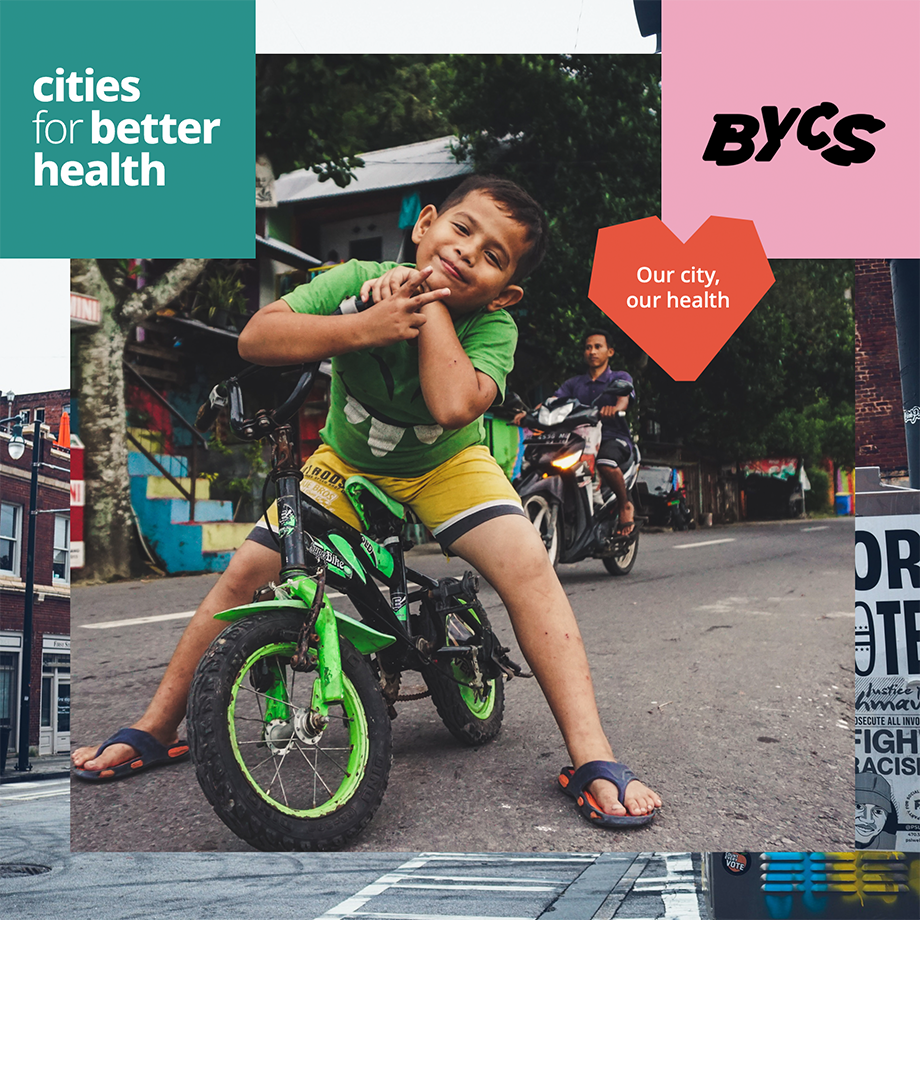Cities for Better Health has teamed up with BYCS, an NGO with global expertise in implementing and expanding access to cycling projects, to give children in vulnerable communities better opportunities to cycle safely in cities.

Today, children in cities are growing up in environments that do not enable them to be physically active. Globally, more than 390 million children and adolescents between 5 and 19 years old are overweight, including 160 million living with obesity.1 The World Health Organization recommends an average of 60 minutes per day of moderate to vigorous physical activity for 5–17-year-olds, yet more than 80% do not meet this threshold.2
To reverse this trend, Cities for Better Health is
intensifying efforts to reduce sedentary behaviour and increase
access to engaging physical activities, particularly in vulnerable
communities. In June, Cities for Better Health partnered with BYCS,
an NGO with global expertise in implementing and expanding access to
cycling projects.
Together, Cities for Better Health and BYCS are bridging the
gap between the health and mobility sectors and highlighting
cycling's role in promoting health and physical activity.
The partnership’s first project will focus on introducing cycling among children in vulnerable communities across three pilot cities. The three pilot cities will be announced later this year. Working in collaboration with local partners, these initiatives aim to integrate cycling as a regular activity for children, fostering a culture of active mobility from an early age.
Jo Jewell, Director of Cities for Better Health, emphasises that enhancing opportunities for physical activity through active mobility is at the heart of their strategy.
"Encouraging a culture of cycling is a great way to increase physical activity and improve the health of all children. Prioritising cycling programmes that target young children can help reduce health disparities between advantaged and disadvantaged neighbourhoods, especially in urban settings," he explains.
Learn more about BYCS here: https://bycs.org/
World Health Organization. Obesity and overweight. Accessed March, 2024. https://www.who.int/news-room/fact-sheets/detail/obesity-and-overweight
World Health Organization. Physical Activity. 2023. https://www.who.int/news-room/fact-sheets/detail/physical-activity
